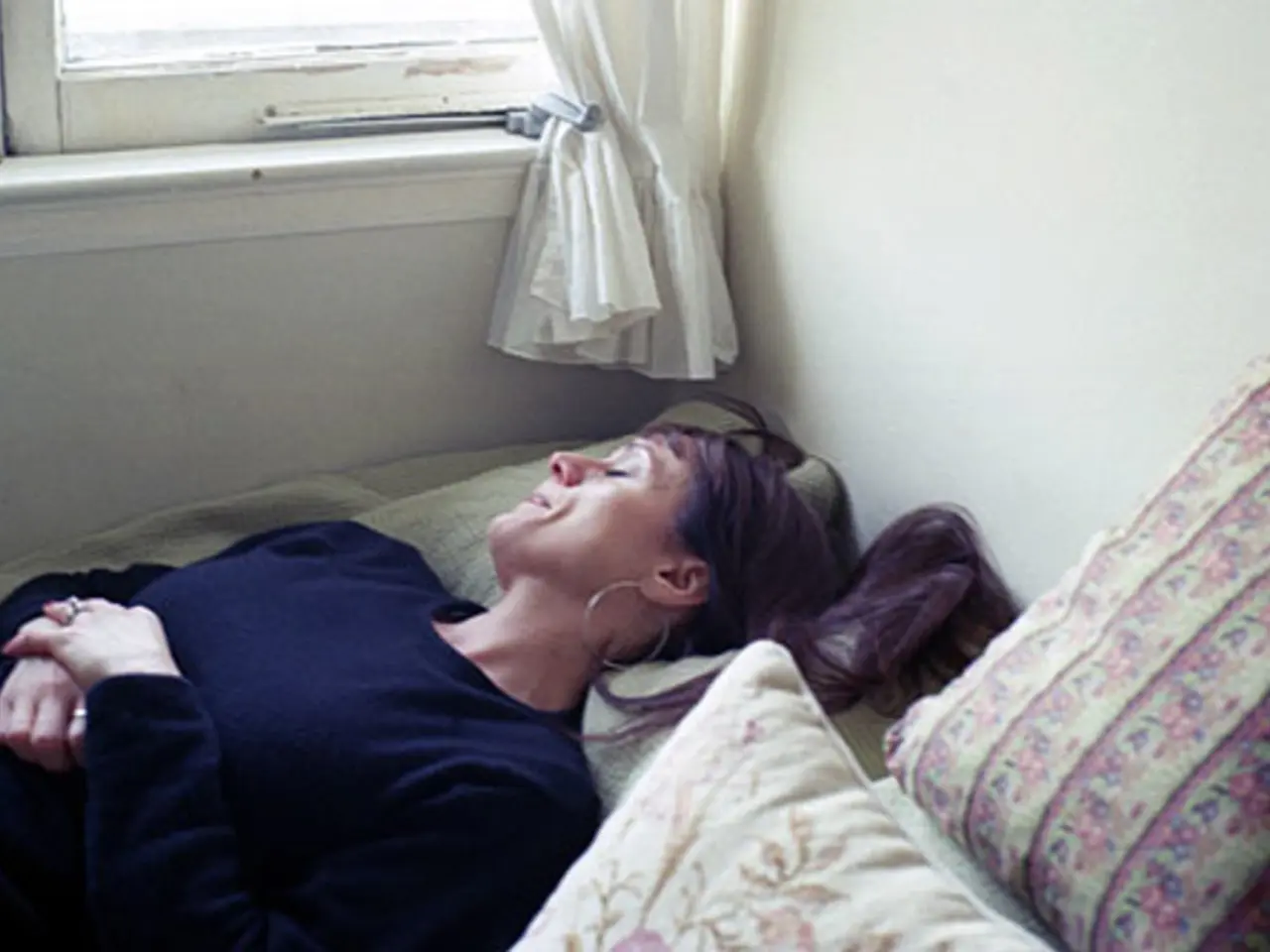Top Sleep Aids for Persistent Sleeplessness
In a 2020 study, a correlation was found between insomnia and sleep hygiene issues. Improving sleep hygiene, such as maintaining a consistent sleep schedule, avoiding alcohol, caffeine, and large meals before bedtime, and creating a relaxing sleep environment, was shown to improve sleep quality and daytime wakefulness [1].
However, the long-term use of prescription sleep aids like zaleplon (Sonata), zolpidem (Ambien), and eszopiclone (Lunesta) for insomnia can lead to various adverse effects. These medications are generally intended for short-term use, and prolonged use increases risks such as dependence, cognitive impairment, and other side effects [2].
Long-term effects of these sleep aids include cognitive and psychomotor impairment, physical side effects, mood and behavioral changes, dependence, and tolerance. Cognitive impairment can manifest as residual "hangover" effects like drowsiness, impaired memory, difficulty concentrating, abnormal dreams, and impaired motor function, increasing risks of accidents such as falls and impaired driving [3].
Physical side effects common with zolpidem include dizziness, dry mouth, gastrointestinal issues, lethargy, sinusitis, back pain, heart palpitations, rash, and upper/lower respiratory infections [3]. Mood and behavioral changes may include increased risks of depression, hallucinations, behavioral disturbances, and sleep-related complex behaviors such as sleepwalking or "sleep activities" one cannot recall [3].
Depending on these medications can lead to physical and psychological dependence, with users potentially increasing dosage or frequency over time [4]. This risk is heightened when combined with other CNS depressants like alcohol or benzodiazepines [5].
There are increased risks of falls, bone fractures, respiratory suppression, and even mortality associated with chronic use, especially in elderly or vulnerable populations [3]. User reports indicate variability in individual effectiveness and tolerance, with some people using these medications for many years but experiencing inconsistent benefits or side effects [2].
Because of these risks, healthcare providers typically recommend limiting these medications to short-term use and carefully monitoring for side effects or signs of dependence during longer treatments [6].
In contrast, cognitive behavioral therapy for insomnia (CBT-I) can help people with insomnia fall asleep and get better quality sleep. CBT-I involves several parts: cognitive therapy, relaxation or meditation therapy, sleep education, sleep restriction therapy, and stimulus control therapy [7].
Long-term treatments for insomnia may be found through CBT-I and improvements to lifestyle and sleep hygiene. It is important to note that sleep aids should be used only when necessary and discussed with a doctor, as they can potentially cause serious side effects and may lead to misuse or addiction if used for longer than a few weeks at a time [6].
References:
[1] National Sleep Foundation. (2020). The Connection Between Sleep Hygiene and Insomnia. Retrieved from https://www.sleepfoundation.org/articles/connection-between-sleep-hygiene-and-insomnia
[2] Mayo Clinic. (2021). Zaleplon (Sonata). Retrieved from https://www.mayoclinic.org/drugs-supplements/zaleplon-oral-route/description/drg-20071929
[3] National Institute on Aging. (2021). Sleep Aids: What You Need to Know. Retrieved from https://www.nia.nih.gov/health/sleep-aids-what-you-need-know
[4] National Institute on Drug Abuse. (2020). Sleep Disorders and Substance Use Disorders. Retrieved from https://www.drugabuse.gov/publications/drugfacts/sleep-disorders-substance-use-disorders
[5] U.S. Food and Drug Administration. (2021). Zolpidem and Eszopiclone: Important Safety Information. Retrieved from https://www.fda.gov/drugs/postmarket-drug-safety-information-patients-and-providers/zolpidem-and-eszopiclone-important-safety-information
[6] American Academy of Sleep Medicine. (2021). Sleep Medications. Retrieved from https://www.sleepeducation.org/sleep-disorders-definition/sleep-medications
[7] National Sleep Foundation. (2020). Cognitive Behavioral Therapy for Insomnia (CBT-I). Retrieved from https://www.sleepfoundation.org/insomnia/cognitive-behavioral-therapy-insomnia-cbt-i
- The study in 2020 discovered a correlation between insomnia and sleep hygiene issues, suggesting that improving sleep hygiene can aid in better sleep quality and daytime wakefulness.
- Prescription sleep aids, like zaleplon, zolpidem, and eszopiclone, should ideally be used for short-term use due to potential long-term adverse effects, such as dependence, cognitive impairment, and other side effects.
- Long-term use of sleep aids can lead to cognitive and psychomotor impairment, physical side effects, mood and behavioral changes, dependence, and tolerance.
- Cognitive impairment from sleep aids can manifest as drowsiness, impaired memory, difficulty concentrating, abnormal dreams, and impaired motor function, increasing risks of accidents.
- Physical side effects common with zolpidem include dizziness, dry mouth, gastrointestinal issues, lethargy, sinusitis, back pain, heart palpitations, rash, and upper/lower respiratory infections.
- Mood and behavioral changes from sleep aids may include increased risks of depression, hallucinations, behavioral disturbances, and sleep-related complex behaviors such as sleepwalking or "sleep activities" one cannot recall.
- Prolonged use of these sleep aids increases the risk of falls, bone fractures, respiratory suppression, and even mortality, especially in elderly or vulnerable populations.
- Cognitive behavioral therapy for insomnia (CBT-I) is an alternative long-term treatment for insomnia, which involves cognitive therapy, relaxation or meditation therapy, sleep education, sleep restriction therapy, and stimulus control therapy.
- It is vital to prioritize lifestyle improvements, sleep hygiene, and CBT-I for long-term treatments of insomnia, while acknowledging the potential risks of sleep aids and ensuring their use is discussed with a doctor.




